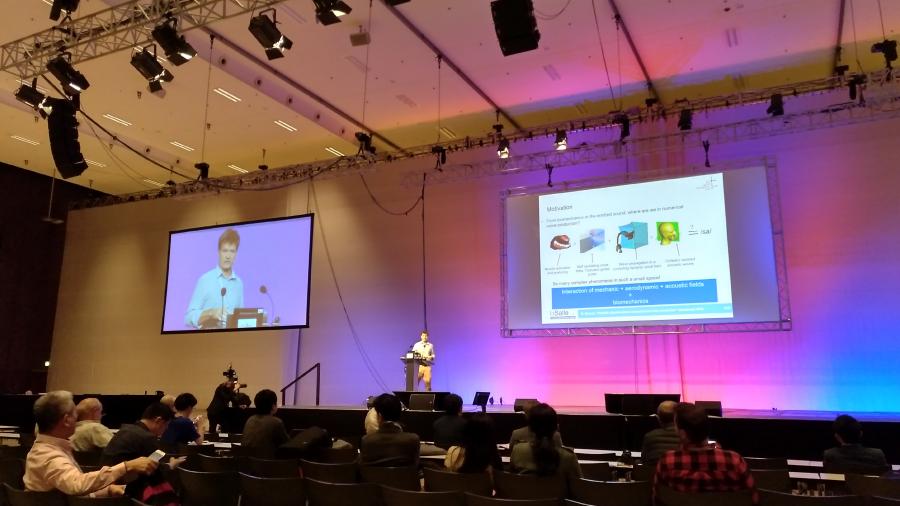GTM at INTERSPEECH2019

Figure. Prof. Guasch at the survey lecture: Realistic physics-based computational voice production. InterSpeech2019.
The members of the GTM Prof. Oriol Guasch and PhD student Marc Freixes attended the congress INTERSPEECH 2019, which was held in Graz, (Austria) from 15-19 September.
Prof. Oriol Guasch gave one of the ten surveys lectures of the congress (https://www.interspeech2019.org/program/surveys/), which was entitled:
Realistic physics-based computational voice production
with abstract:
Simulating the very complex physics of voice on realistic vocal tract geometries looked daunting a few years ago but has recently experienced a very significant boom. Earlier works mainly dealt with vowel production. Solving the wave equation in a three-dimensional vocal tract suffices for that purpose. As we depart from vowels, however, things quickly get harder. Simulating a few milliseconds of sibilant /s/ demands high-performance computers to solve the sound turbulent eddies generate. Producing a diphthong implies dealing with dynamic geometries. A syllable like /sa/ seems out of reach of current computation capabilities, though some modelling techniques inspired on one-dimensional approaches may lead to more than acceptable results. The shaping of dynamic vocal tracts shall be linked to biomechanical models to gain flexibility and achieve a more complete representation on how, we humans, generate voice. Besides, including phonation in the computations implies resolving the vocal fold self-oscillations and the very demanding coupling of the mechanical, fluid and acoustic fields. Finally, including naturalness in computational voice generation is a newborn and challenging task. In this talk, a general overview on realistic physics-based computational voice production will be given. Current achievements and remaining challenges will be highlighted and discussed.
That lecture summarized the advances of the GTM in numerical voice production in the last decade and contents the work of many colleagues and collaborators. In particular, Marc Arnela, Arnau Pont, Francesc Alías, Marc Freixes and Joan-Claudi Socoró from the GTM are co-contributors of the exposed work and very much acknowledged.